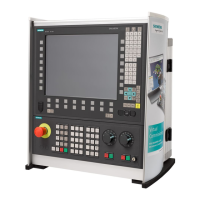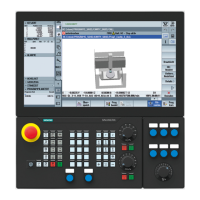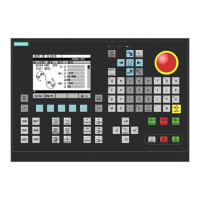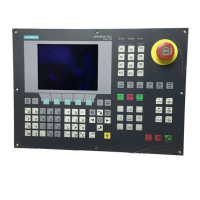Brief Description
1.3 Frames
Axis Types, Coordinate Systems, Frames (K2)
1-6 Function Manual, 08/2005 Edition, 6FC5397-0BP10-0BA0
Features in relation to axes
The rough and fine offsets, scaling and mirroring can be programmed for geometry and
special axes. A rotation can also be programmed for geometry axes.
Rough and fine offsets
The translation component of FRAMES comprises:
• Rough offset with TRANS, ATRANS and CTRANS
The rough offset is normally specified by the machine setter.
The programmable offsets for all geometry axes and special axes are specified with
TRANS.
• Fine offset with CFINE
This can be defined by the machine operator, within certain input limits.
G58, G59
G58 and G59 can be programmed to replace the rough and fine offsets of the programmable
frame on an axial basis. These functions can only be used when the fine offset is configured.
• Rough offset with G58
G58 changes only the absolute translation component (rough offset) for the specified
axis; the total of additively programmed translations (fine offset) is retained.
• Fine offset with G59
G59 is used for axial overwriting of the additively programmed translations for the
specified axes, which were programmed with ATRANS.
Frame rotations
Orientations in space are defined via frame rotations as follows:
• Rotation with ROT defines the individual rotations for all geometry axes.
• Solid angles with ROTS, AROTS, CROTS define the orientation of a plane in space.
• Frame rotation with TOFRAME defines a frame with a Z axis pointing in the tool direction.
Scaling
SCALE is used to program the programmable scale factors for all geometry axes and special
axes.
ASCALE must be programmed if a new scaling is to be based on a previous scaling, rotation,
translation or mirroring.
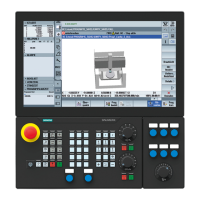
